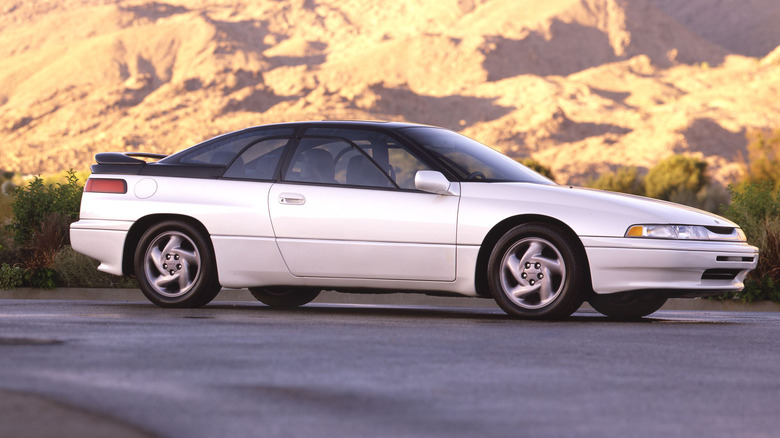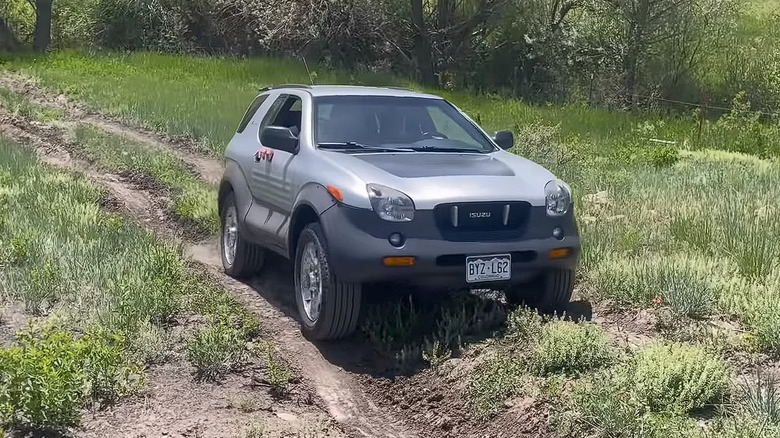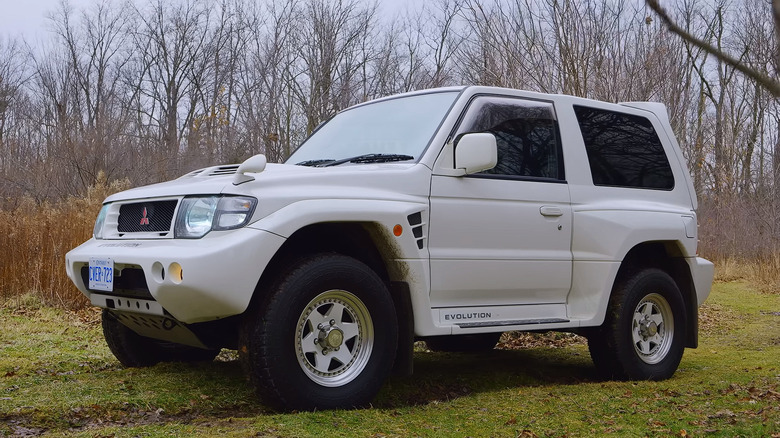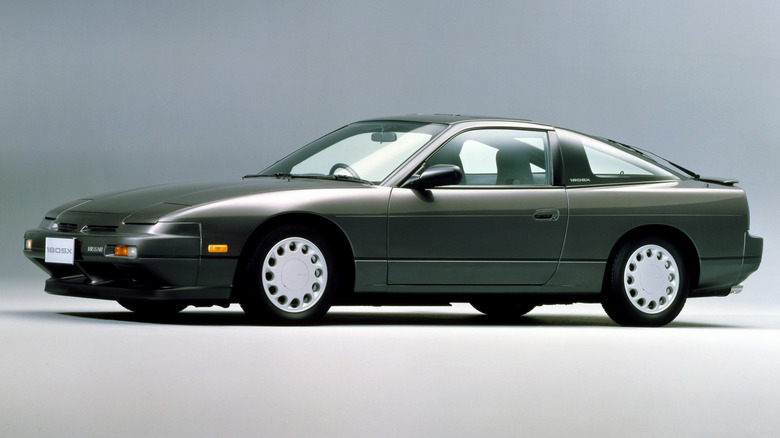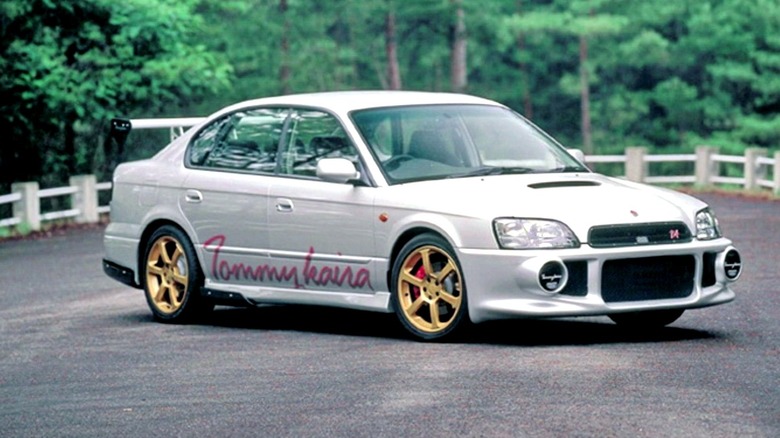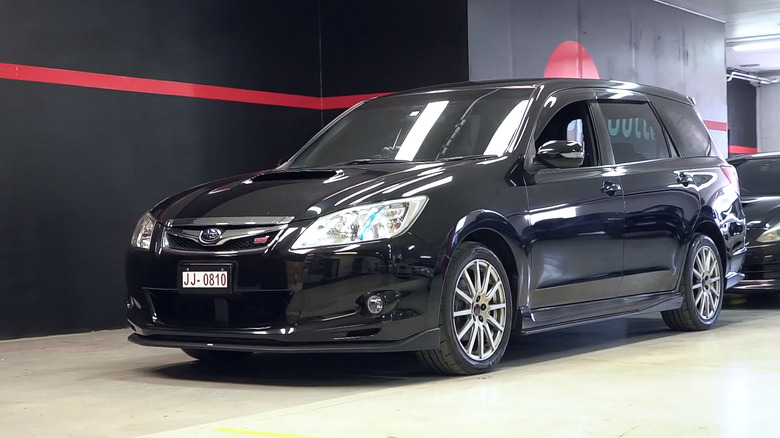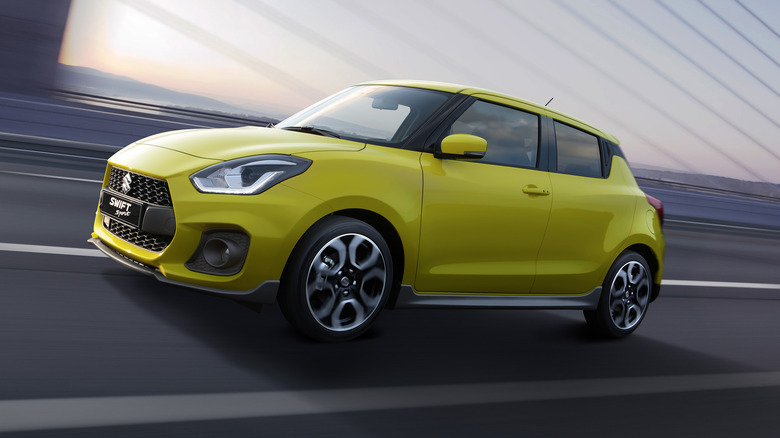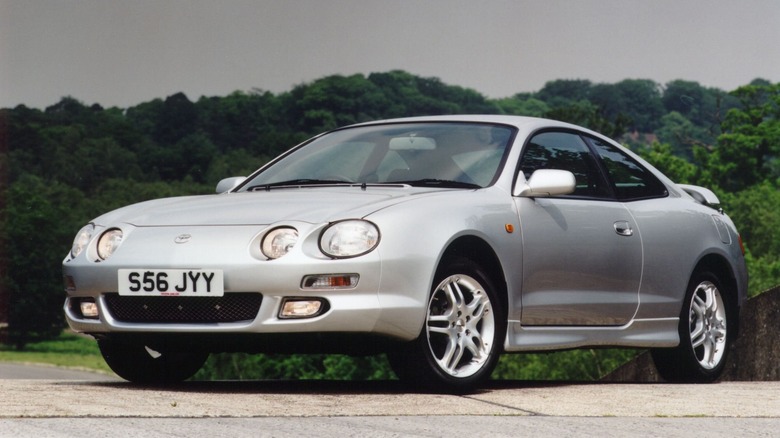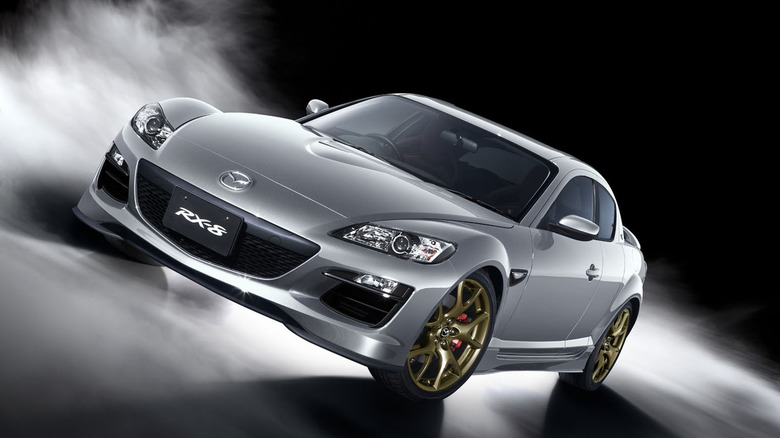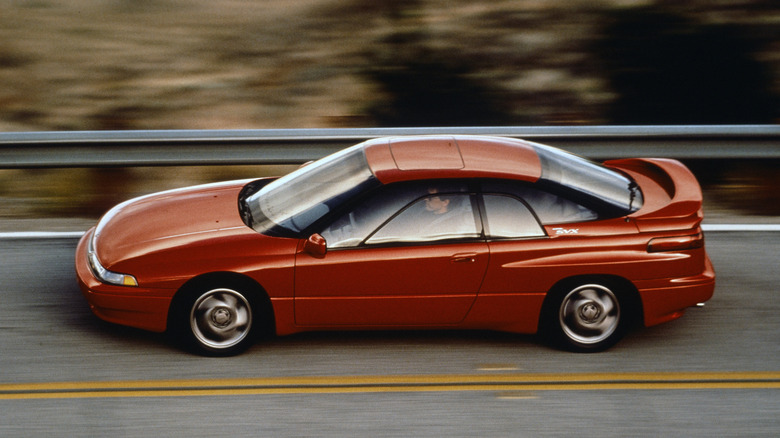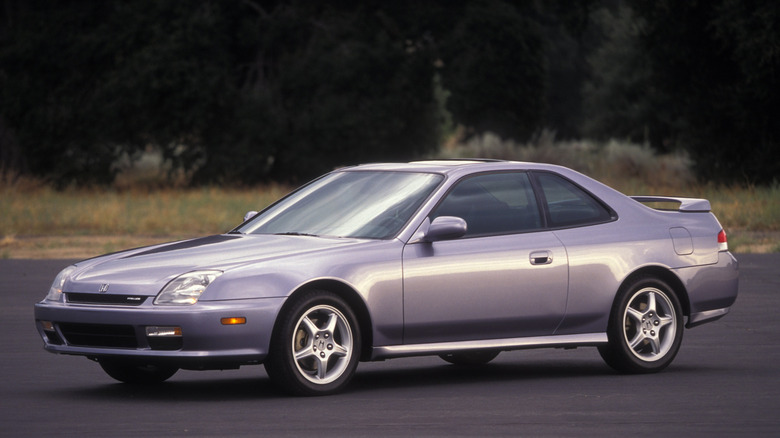10 Underrated JDM Cars That Deserve More Attention
Japan's automakers were in full swing in the 1990s, with each manufacturer sporting a full lineup of fun cars. You can find literally every type of vehicle if you search thoroughly, including special off-road SUVs, cheap, driver-oriented sports cars, and luxury grand-tourers. There were so many of them, in fact, that even some seasoned enthusiasts still encounter some interesting models they didn't know before. That also led to some models being forgotten or underrated because they weren't easy to tune or not powerful enough.
But JDM (Japanese Domestic Market) cars were never about peak power. Japanese engineers found other solutions to the fun-car formula, including answers that weren't available to automakers from other countries. As a result, even some underrated JDM classics offer a unique driving experience that few other vehicles can match. Accordingly, these cars deserve more love and a place in the JDM Hall of Fame.
In this article, we will uncover some of those cars, with the emphasis on vehicles that aren't as talked about in JDM circles, along with models that offer unique features and engineering solutions. Since these underrated JDM cars are also more affordable than the overvalued Supras, Skyline GT-Rs, and NSXs, the list might help you find an enjoyable JDM classic on a budget. Let's take a deeper look!
Isuzu VehiCROSS (1997 to 2001)
Modern SUVs have become very capable, providing excellent on-road and off-road dynamics. But they surely lack quirkiness and style — you could even say most of them are boring. Things were different in the late 1990s when Isuzu launched the VehiCROSS, a two-door SUV designed for style and fun rather than practicality. In other words, you won't be buying this SUV to haul your family around, but with the sole purpose of having Baja-type driving fun.
Although many people would overlook the VehiCROSS as just a peculiar or even ugly vehicle, Isuzu made sure it had substance. The suspension, designed to let you cover dirt roads at high velocities, is particularly interesting. It features 6061-T8 aerospace-grade aluminum shock absorbers with external expansion chambers, which were filled with pressurized nitrogen gas to eliminate oil cavitation.
The unique shock absorbers not only make it more capable of handling dirt and sand than any other SUV of its era but also remarkably good for driving on the road, with lateral grip and stopping power equaling that of sporty crossover/SUV-type vehicles. Sure, it's not a sports car, but it offers an off-road/on-road balance that few other SUVs can match, even today. Meanwhile, the potent 3.5-liter V6, producing 215 hp and 230 lb-ft of torque, propels the VehiCROSS to 60 mph in 8.8 seconds — not bad for an off-road SUV. Unfortunately, you'll have to settle for a four-speed automatic, as there is no manual option on the Isuzu VehiCROSS. Other than that, though, it was and is a pretty unique proposition.
Mitsubishi Pajero Evolution (1997 to 1999)
The Mitsubishi Pajero Evolution was another unique JDM SUV from the 1990s designed for tackling dirt and speed. Although it doesn't look as eccentric as the Isuzu VehiCROSS, Mitsubishi's dirt dweller certainly carries more panache, as it's a Dakar Rally homologation special. The fact that the Pajero Evolution dominated the 1998 Dakar Rally event adds even more verve to this three-door SUV.
However, the road version of the Pajero Evolution does much more than just share the name with the rally-winning machine. To begin with, it has the proper Dakar Rally look, with wide wheel arches, a huge hood scoop, and even a spoiler in the back. It looks very purposeful, like a mish-mash of a rally car and an off-road SUV. Fortunately, the exciting bits are not only skin-deep — the Pajero Evolution also has close mechanical ties with the rally vehicle.
For instance, it's equipped with a fully independent suspension, 125-mm (4.9-inch) wider track at the front and 110-mm (4.3-inch) at the rear, Torsen limited-slip differentials, and a suspension with much longer travel than the regular Pajero — 240-mm (9.45-inch) front and 270-mm (10.6-inch) rear. Under the scooped front hood sits a 3.5-liter V6, producing 276 hp due to the gentlemen's agreement in Japan and 256 lb-ft of torque. Mitsubishi paired the engine with a five-speed manual, which certainly brings fun into the equation. It's no slouch either, sprinting to 60 mph in 6.4 seconds — similar to some sports cars from the 1990s.
Nissan 240SX/200SX/180SX (1989 to 1998)
Nissan's S13 chassis has a special place in the hearts of drift enthusiasts. It's the perfect base for a cheap, rear-wheel-drive sports car with exceptional handling balance and, crucially, one that's not shy of upgrades. In Japan, one version was sold as the 180SX, equipped with a 2.0-liter inline-4 turbo producing 205 hp and 202 lb-ft (274 Nm) of torque. With a curb weight of 2,901 lbs (1,316 kg) and a five-speed manual, the 180SX sprints to 62 mph (100 km/h) in 7.1 seconds and has a top speed of 146 mph (235 km/h).
That's not particularly fast, but the 180SX was still pretty quick for a 1990s sports car, and it wasn't designed for straight-line speed in the first place. Besides, the aftermarket support for these vehicles is booming, so making it quicker is pretty straightforward. Tuned or not, the 180SX will give you the unadulterated driving experience purists are looking for, even on models with Nissan's Super HICAS four-wheel-steering system.
Unfortunately, the S13 was available in North America as the 240SX, equipped with a paltry 2.4-liter naturally-aspirated unit that produced only 140 hp. Even European buyers got a better version of the vehicle, called the 200SX and packing a 1.8-liter turbocharged engine producing 169 hp. But it doesn't matter because each version brings that natural handling balance to the table, along with the strong aftermarket support. So don't overlook the 240SX because of its engine — it's still an awesome, fun-driving drift machine.
Subaru Legacy B4 RSK (1998 to 2004)
Are you dreaming of owning an Impreza WRX STI, but it's too much of a sacrifice? Then the Legacy B4 RSK might fit the bill. It's a larger, more grown-up version of Subaru's rally homologation special, with a more practical and luxurious interior, so it's a better daily driver. In some versions, Subaru even equipped the Legacy with a sound system from Mcintosh, a company known for producing luxurious hi-fi equipment.
Still, packing a 2.0-liter twin-turbo flat-four producing 276 bhp @6,500 rpm and 253 lb-ft (343 Nm) of torque @5,000 rpm, the Legacy B4 RSK is certainly no slouch. Paired with Subaru's rally-inspired AWD system and a five-speed manual, this sleeper sedan reaches 62 mph (100 km/h) in just 5.5 seconds. Meanwhile, the AWD system takes care of grip, providing even less experienced drivers with the means to drive fast.
Later iterations of the Legacy also received some interesting high-performance variants. For instance, from 2008 to 2009, Subaru made 402 Legacy STI S402 models, equipped with a 2.5-liter turbocharged engine producing 281 bhp and 289 lb-ft (392 Nm), six-speed manual, and AWD. Meanwhile, the fifth-gen model Legacy (2009 to 2013) had a B4 variant with the same 2.5-liter flat-four producing 281 bhp, capable of reaching 62 mph (100 km/h) in 5 seconds flat.
[Featured image by Zero935 via Wikimedia Commons | Cropped and scaled | CC-BY-2.0]
Subaru Exiga 2.0 GT Tuned by STI (2009 to 2018)
The Legacy B4 RSK is a relatively practical car for families, but what if you desire even more practicality yet still want to have fun while driving? Enter the ultimate JDM minivan, the Subaru Exiga 2.0 GT tuned by STI. The name is a mouthful, but at least it tells you everything you need to know about this practical minivan with STI performance upgrades.
The Exiga is one of the most sensible performance cars you can buy. The cabin offers three seating rows, and according to reviews, it's very spacious, even for larger adults. That's despite the fact that it is a relatively small minivan, measuring 186.6 inches (4,740 mm) long. The seats are gradually elevated, giving it theater-like seating for better visibility.
But it's the STI bits that are much more interesting in this family hauler. The 2.0-liter engine, standard in the 2.0 GT model, produces 221 hp and 240 lb-ft (326 Nm) of torque. In the STI version, the engine is paired to a five-speed automatic, though it's a sporty edition that blips the revs when it downshifts. The gearbox sends the power to all four wheels, much like in an Impreza WRX STI. Other STI performance enhancements include tightened suspension, 17-inch STI wheels, Alcantara and leather seats inside, and a Momo steering wheel. Subaru only made 300 of the Exiga 2.0 GT tuned by STI; the regular 2.0 GT model was sold in much higher numbers, offering the same engine minus the STI upgrades.
Suzuki Swift Sport (2017 to 2023)
Many people dream of owning a sports car one day. Unfortunately, that dream is unattainable for most because performance cars are simply too expensive. That is until you learn about the Suzuki Swift Sport — a compact and lightweight back-to-basics hot hatch. This cute urban dweller doesn't seem special when you look at the numbers — under the hood, it packs a tiny 1.4-liter inline-4 turbo, producing 138 hp and 170 lb-ft (230 Nm) of torque. However, the Swift Sport also weighs only 2,139 lbs (970 kg), so it's zippy around town – 0-62 mph takes 8.1 seconds, and the top speed is 131 mph (210 km/h).
Furthermore, the Swift Spot has special Monroe front struts and rear shock absorbers, stiffer stabilizers, and stabilizer mounts with Teflon seats, all in the name of maximum steering response and agility. The six-speed manual also shifts "Swift-ly" through the gears and with solid precision. As a result, the Swift Sport is a very fun car to drive on a twisty road, with agility that will embarrass some far costlier sports cars. Because the Swift Sport is not hugely fast, you can drive it at pretty much 100% on public roads and enjoy those excellent chassis dynamics — no track required.
The best thing about the Swift Sport is that it costs only around $18,000 USD ($27,990 AUD) in Australia, which is the price of base economy cars in the U.S. It also gets 40 mpg (6.1 liters per 100 km), so running costs are low too.
Toyota Celica SS III (1995 to 1999)
The GT-Four ST205 is undoubtedly the most popular version of Toyota's now-extinct sports car, the Celica, mainly because it was banned from the World Rally Championship after Toyota was caught cheating with it. Still, with a rally-developed AWD system and a 252-hp engine, it can hold itself even against some modern rally homologation specials. However, certain types of car enthusiasts might reject the turbocharged Celica GT-Four because of the lower engine response.
But that's no problem, because the sixth-gen Celica was also offered with Toyota's famous, high-revving "Red Top" BEAMS (Breakthrough Engine with Advanced Mechanism) engine in the SS III trim. The 2.0-liter unit in this car has all the responsiveness purists rave about while producing 200 hp @7,000 rpm and 152 lb-ft (206 Nm) @6,000 rpm. Unlike its rally-inspired sibling, the Celica SS III was only a front-wheel-drive machine. However, it has a helical LSD on the front axle to increase traction and Toyota's "Super Strut Suspension" that enhances stability.
The lack of AWD also kept the weight down. At 2,668 lbs (1,210 kg), the Celica SS III is still lighter than most modern vehicles. As a result, it's capable of reaching 60 mph in 6.5 seconds — not too shabby for a naturally aspirated 1990s car equipped with a five-speed manual. Besides, that acceleration number is similar to the Honda Integra Type R DC2, considered one of the best front-wheel-drive sports cars in history. When new, the Celica SS III was a JDM-only special, but you can import one today for around $10,000.
Mazda RX-8 (2003 to 2012)
Are you fantasizing about a rotary sports car, but the RX-7 is too unattainable? Well, Mazda made another rotary fun machine — one that's perhaps even purer, as it has no turbocharger. Heck, it even has back seats and two additional half-doors, so it's more practical, too. We are, of course talking about the RX-8 — Mazda's last, now-discontinued rotary sports car, and one that undeservedly faded out from the minds of enthusiasts.
There is no question that the Renesis engine in the RX-8 has its reliability problems, but it's not like owning an RX-7 is smooth sailing. Take care of it properly, and thrash it only when it's properly warmed up, and the Renesis engine will last longer than you anticipated. Even then, Mazda's last rotary isn't designed to be turbocharged, so extracting more power is a no-go or very challenging.
But you'd be killing the RX-8 with forced reduction, anyway, as this sports car wants to be revved to the stratosphere. The most powerful 1.3-liter rotary in this coupe produces 232 hp @8,200 rpm and 159 lb-ft (215 Nm) @5,500 rpm and has a 9,000 rpm redline. As a result, it reaches 60 mph in just 6 seconds — not bad for a four-door grand-touring coupe. It sounds very good, too, and has an almost perfect handling balance. The precise 6-speed manual is just the cherry on top of this excellent driver's car.
Subaru SVX (1991 to 1996)
The Subaru SVX is undoubtedly one of the quirkiest and most unique grand-touring machines coming from Japan. Still, it's not mentioned as often as many other JDM grand-tourers of the 1990s, and today the Subaru SVX is almost forgotten. However, if you put tuning aside, the SVX makes a lot of sense, especially for people who value distinctive design and engineering.
Unlike its JDM peers, the SVX is a luxury coupe designed to get you anywhere quickly and with style. It has a very unusual design, with a glass canopy that borrows inspiration from fighter jets, but the interior is driver-oriented and has excellent craftsmanship, giving off more of an exotic car vibe than a 1990s JDM sports car. Advanced tech is on board, too, such as an 8-way adjustable driver's seat, a tilt-telescope wheel with memory function, and speed-sensing wipers. Crucially, thanks to the glass canopy, the SVX feels roomy inside, with good space for front occupants.
Under the low front hood, Subaru installed a 3.3-liter flat-six that produces 230 hp. It's not overly powerful but can still propel the SVX to 60 mph in 7.6 seconds despite the grand tourer's curb weight of 3,164 lbs (1,435 kg). As you'd expect from Subaru, the SVX is equipped with a full-time AWD system, making it easy to drive fast. Subaru even opted for a four-speed automatic to make it more approachable for the driver. That might be its Achilles heel, but it's at least a specially-developed, electronically-controlled transmission. Besides, manual swaps are pretty straightforward.
Honda Prelude SH BB5-BB9 (1997 to 2002)
Honda has made some amazing sports cars over the years, with the Integra Type R, S2000, and Civic Type R enjoying the most attention. However, Honda's front-wheel-drive grand-tourer, the Prelude, is often underrated in JDM circles — and undeservedly so, because the Prelude has that special sauce that many other sports cars lack. The "SH" high-performance version of the Prelude has Honda's Active Torque Transfer System (ATTS), which minimizes understeer by using torque steer to provide the outer wheel with more power. It won't make the Prelude as good to drive as the Integra Type R DC2, but the Prelude SH is still one of the best-handling cars of its era, even compared to some rear-wheel-drive cars.
The Prelude BB5-BB9 also has a very good powerplant — a 2.2-liter VTEC-equipped inline-4 from Honda's golden era of engine design. It makes 200 hp and 156 lb-ft (212 Nm) of torque and has a relatively high 7,400 rpm redline. Provided you are crafty with a stick-shift, a five-speed in this case, the Prelude will reach 60 mph in 6.9 seconds, a solid number for its era.
Crucially, the Prelude has all the ingredients of a driver's car. Good, precise steering with a lot of feedback and a shifter/clutch combo that works effortlessly. Pair that with a naturally aspirated engine that likes to rev and a balanced chassis, and it becomes clear why the Prelude BB5-BB9 is a hidden JDM gem. It's relatively affordable, too, considering the prices of 1990s JDM classics today.
